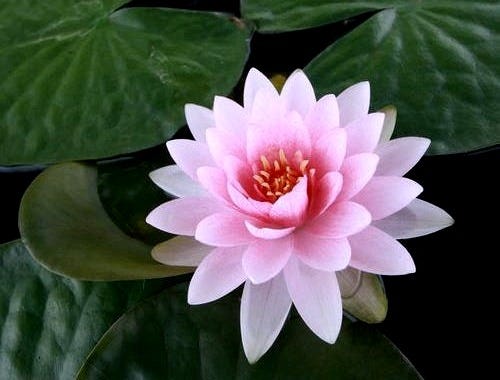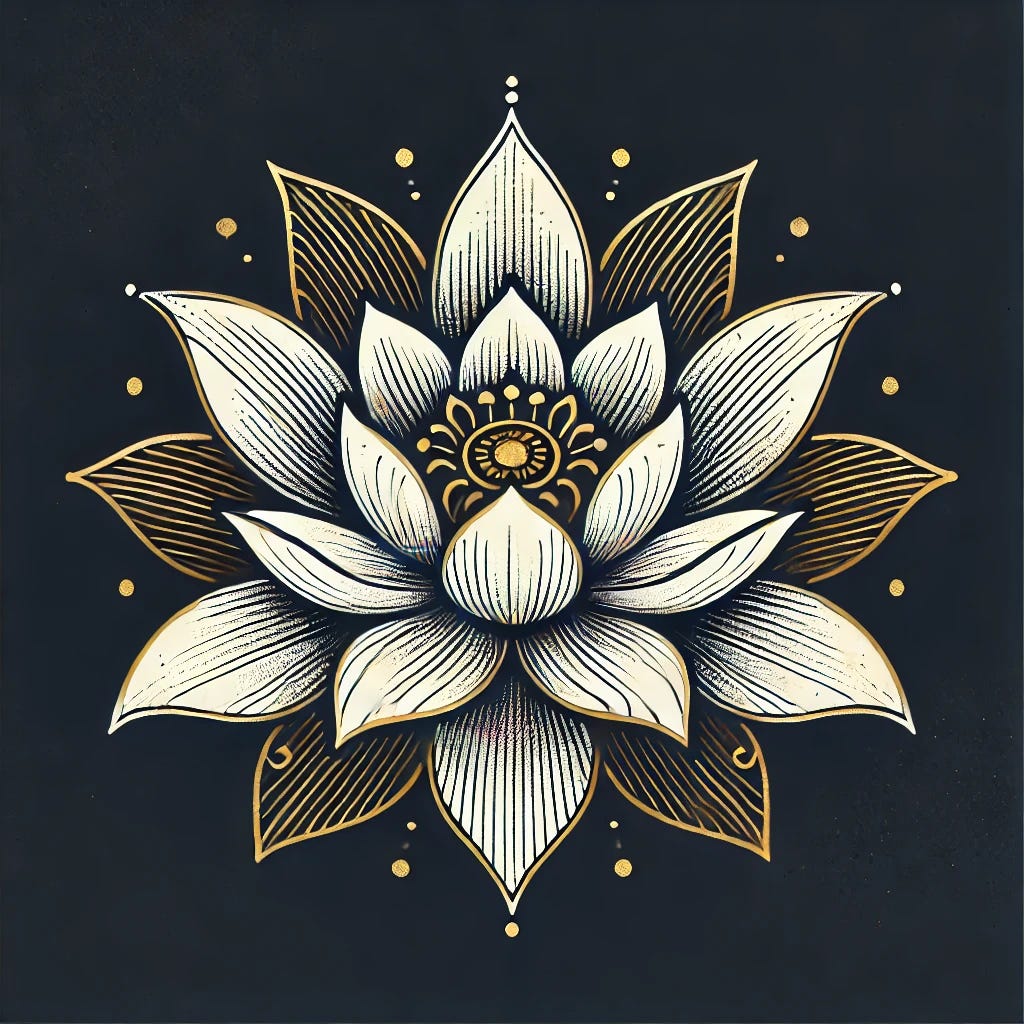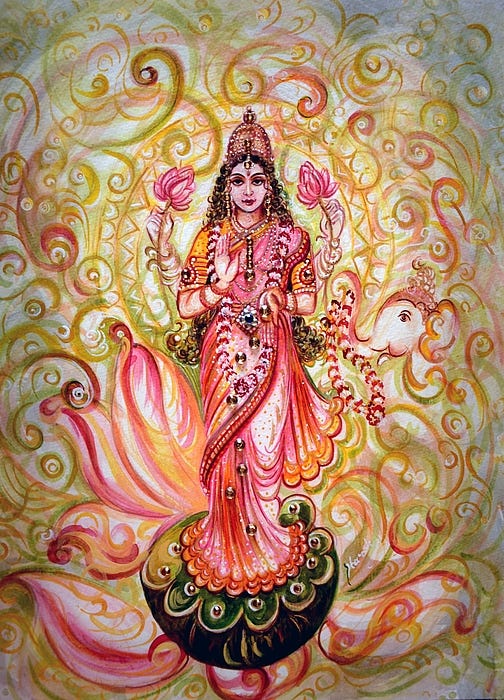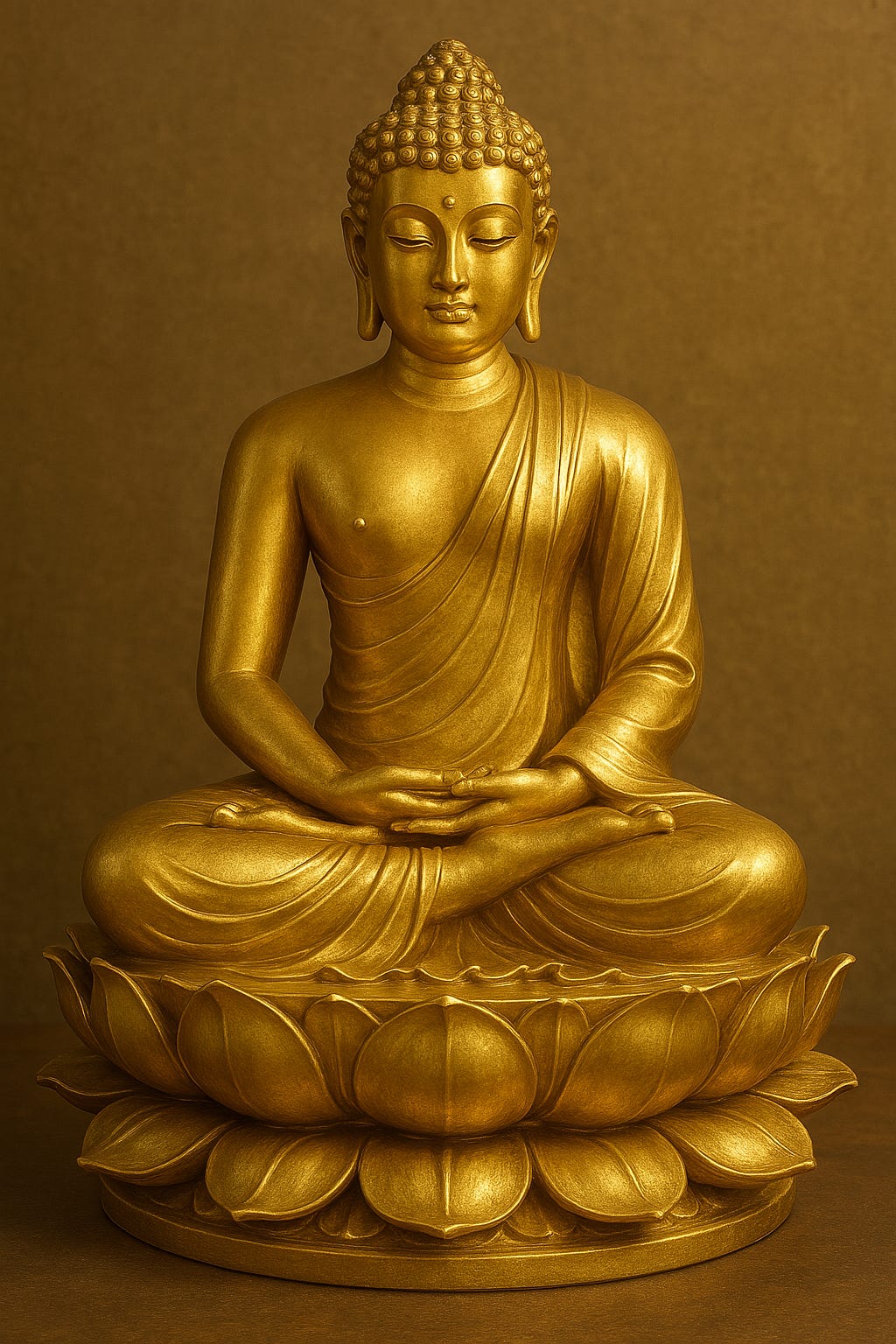#16 - The meaning behind the lotus flower
Awakening is possible even out of the muddiest water!
I recently found myself in one of those moments where I was frustrated about my spiritual progress. My meditation and yoga practices had fallen by the wayside for a few days, I had overeaten at dinner, and a general feeling of apathy had taken over. I felt disconnected—from myself, from my path, from the present.
Still, I found the motivation to sit down and meditate. After a while, as my breath deepened and my thoughts gradually softened, a vision began to form behind my closed eyes: a radiant lotus, delicately coloured in white and pink. It shimmered with a quiet life of its own, and then it felt as if it spoke to me.
"Don’t ever give up," it said. "You can awaken at any moment, in any circumstance, even amidst your doubts or discontent. All you need is to let go."
Moved by those words—or thoughts—I surrendered more fully to the silence and I started to feel a subtle joy within me. As I sank deeper, thoughts drifted further away and time seemed to lose its grip. I became totally still.
When I finally returned back to the here and now, I felt refreshed and clear, filled with happiness and joy.
Inspired by this encounter, I began to explore the symbolism of the lotus in Eastern philosophy. This is what I discovered.
The lotus in Buddhism
According to Buddhist legend, each step taken by the infant Buddha miraculously caused a lotus flower to bloom. The lotus, which returns to the murky water each evening and opens its bloom at the break of day, is considered a symbol of strength, resilience and rebirth.
It further embodies the principle of nonattachment: though rooted in the mud—symbolic of desire and worldly entanglements—it rises above, reflecting the aspirant’s capacity to remain detached from the material world.
The famous Tibetan mantra Oṃ Maṇi Padme Hūṃ, translated as “Oṃ, the Jewel in the Lotus, Hūṃ,” is a devotional invocation to the bodhisattva of compassion. Within this mantra, the lotus represents wisdom, while the jewel connotes skillful means—two essential components on the bodhisattva path.
Lotus flowers of various colors convey distinct spiritual meanings. The white lotus symbolizes purity and spiritual perfection; the red lotus denotes qualities of love and compassion; the blue lotus, often depicted partially open, signifies wisdom and introspective insight; and the golden lotus represents supreme enlightenment.
In several Buddhist traditions, the lotus’s stages of growth metaphorically correspond to the stages of spiritual development. A closed bud represents the pre-enlightened state; a fully open flower indicates complete awakening; and a partially open lotus—with its core obscured—suggests that ultimate truth remains beyond the grasp of conventional perception.
The lotus in Hinduism
In Hinduism, the lotus represents the divine or eternal aspect within human beings and stands for spiritual perfection. It is commonly associated with deities of the sun and fire. In addition to this, the lotus signifies the awakening of one's inner capabilities. Within Tantric and Yogic practices, it symbolizes a person's ability to channel the flow of energy through the chakras—often illustrated as lotus-like wheels—culminating in the blossoming of the thousand-petaled lotus of enlightenment located at the crown of the head.
In the Bhadavad Gita it says “One who performs his duty without attachment, surrendering the results unto the Supreme Lord, is unaffected by sinful action, as the lotus is untouched by water.”
As shown below, the Hindu goddess Lakshmi is often depicted standing on a lotus. Representing wealth and prosperity, she is not only the bestower of material abundance but also the guide to spiritual awakening, inner peace and ultimate fulfillment.
The lotus in Christianity
Although I was familiar with the lotus flower’s deep symbolic meaning in Buddhism and Hinduism, I was surprised to discover that it also appears in Christian symbolism, albeit with less prominence.
In Christian tradition, the lotus is associated with the natural beauty of the Nile, evoking the lush, fragrant flora that once thrived along its banks. In contrast, Gnostic beliefs attribute to the lotus a more profound symbolism—signifying perfection and fertility, while also transitioning toward themes of virginity.
These varied interpretations highlight the lotus flower’s rich cultural relevance and its evolving significance across ancient belief systems.
How can the symbol of the lotus help us in our daily lives?
So how do I work with the lotus symbol? Reflecting on the revelation I had about the lotus during meditation—and the deep sense of peace it brought me—I decided to place a painting of a lotus in my room as a daily reminder of its meaning in my life.
Like the lotus, we too emerge from muddy waters—returning to them again and again in the course of our daily lives. The lotus stands as a powerful symbol, a reminder that at any moment, we have the opportunity to rise, to awaken. So let us embrace this beautiful chance we’ve been given and walk the path of the Buddha with this knowledge!
Want to engage?
Please subscribe and join my community, if you would like to engage in deeper discussions about this or any topic related to healing and awakening. My paid subscribers have access to personal coaching via Chat, and Gold Members get one hour of personal coaching via Teams/Zoom per year on top.
I also offer personalized coaching sessions on spiritual topics and powerful techniques that have helped me and many others before—let them be a resource for you as well on your path of healing and awakening. Just reach out!
The Path of Healing and Awakening is a reader-supported publication. To receive new posts and support my work, consider becoming a free or paid subscriber.







